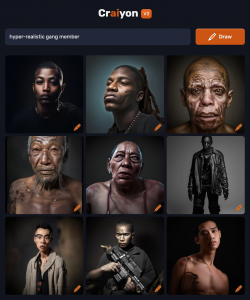Prompt:
Describe or narrate a scenario about a piece of clothing found a decade into a future in which “progress” has continued. Your description should address issues related to disease and elicit feelings of resentment.
Narrative:
The year is 2033. The world has advanced rapidly over the past decade due largely to the exponential growth of machine learning and artificial intelligence systems. Many of the large technology conglomerates from the 2020s have merged into a single corporation, OneWorld, that oversees and controls almost all global industries. The world is more interconnected than ever before. Borders have started to disappear, one central global currency is beginning to dominate markets and the world is largely at peace. Or so it seems.
This process of amalgamation was expedited by the Virus War, a series of bio-warfare attacks that brought the world to a standstill between 2025-2027. Airborne disease is now a part of daily life from the fallout from the war. Millions of people die each year because of illnesses contracted from breathing in contaminated air. Those in historically poor areas of the world continue to suffer the most. Everyone who can afford one now wears a BreatheClean, OneWorld’s most popular product. Those responsible for launching the Virus War have never been identified. Theories are rampant and varied. Many believe that OneWorld was in some way responsible, though no evidence has ever been uncovered.
“What is this thing? A dirty bandage?”, Mason asks as he flings the unidentified object towards his Dad.
“Would you look at that. This dirty piece of fabric is a disposable facemask from years ago. I’m surprised that these things can still be found, let alone worn. You wouldn’t remember but when you were very young we even had some of these things for you”, his Dad replied.
“For me?’, Mason gawked, “why would I need a facemask that looks like this? This wouldn’t be able to protect me from anything…only my BreatheClean can. This looks like nothing more than a sock with some elastic bands on it”.
“We’ve talked about this. Before the Virus War there was a pandemic that essentially shut the world down for a year or two.” Mason’s Dad reminds him, “many people think that that is what the Virus War grew from. They say that some government or maybe even some huge company saw some kind of potential in the fear and panic and decided to recreate it.”
‘That’s just nasty”, Mason scoffed, “how would killing millions of people be good for anyone?”.
His Dad shakes his head. “I’m not sure. What I do know is that there is one company that has beyond profited from the war. Look around, OneWorld touches everything. Our masks, our food, our vehicles, our global currency. Hell- even our colony on Mars and the mining operation on the Moon.”
“Oh come on, Dad”, Mason mocks, “not that conspiracy theory. We have talked at school about how only wackos believe that OneWorld could be responsible for the war. It makes no sense. They are the ones protecting us”, he says as he taps his BreatheClean. “Plus we are learning about how they are trying to clean up our air, make it so that we don’t need to wear our masks anymore”.
Mason’s Dad looks down at the dirty piece of fabric at his feet. He kicks it and motions for Mason to follow him. Like most people, he knows that deep down OneWorld is in some way to blame. He doesn’t push the issue with Mason. He knows that Mason’s school is funded by OneWorld, so it would be a losing battle.
OneWorld’s “BreatheClean”

Generated by Craiyon
Prompt: “hyper realistic person wearing hi-tech face mask”



